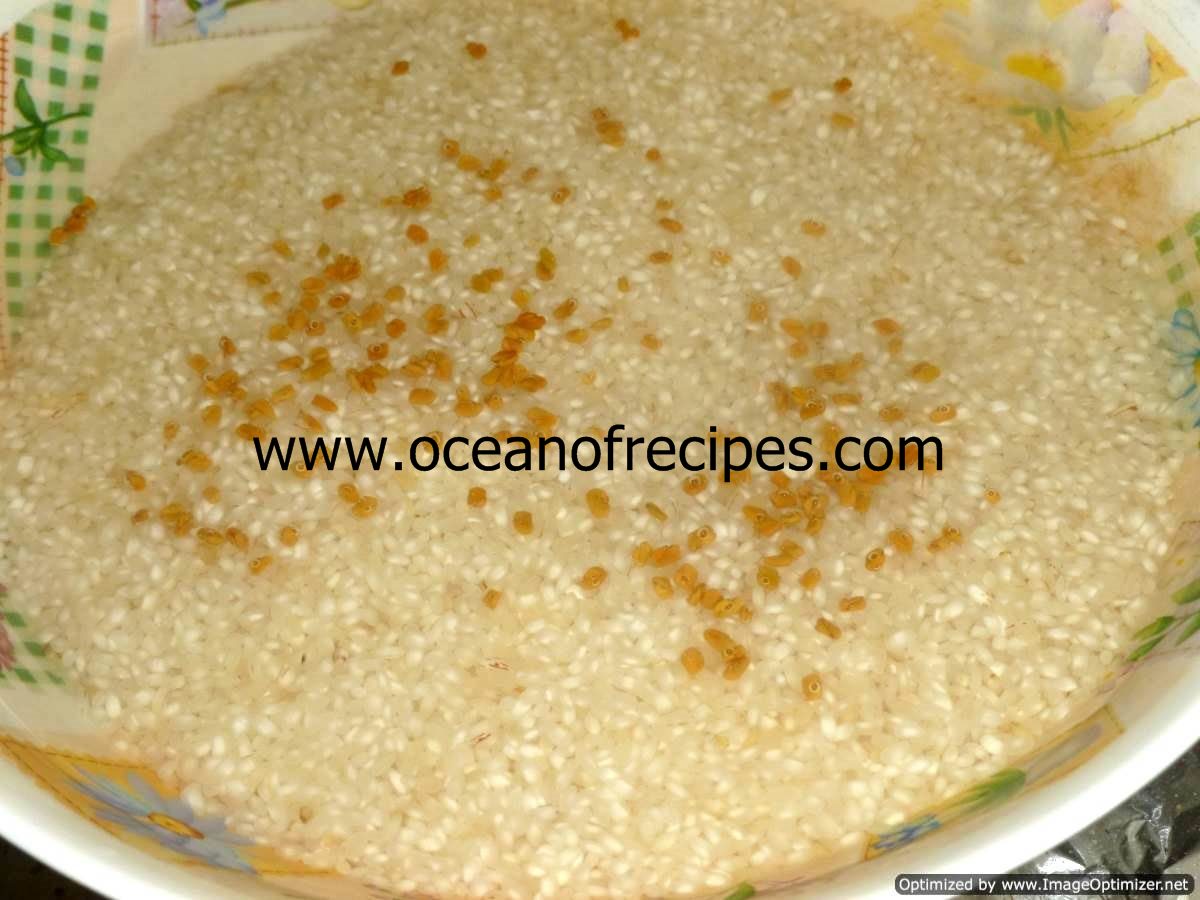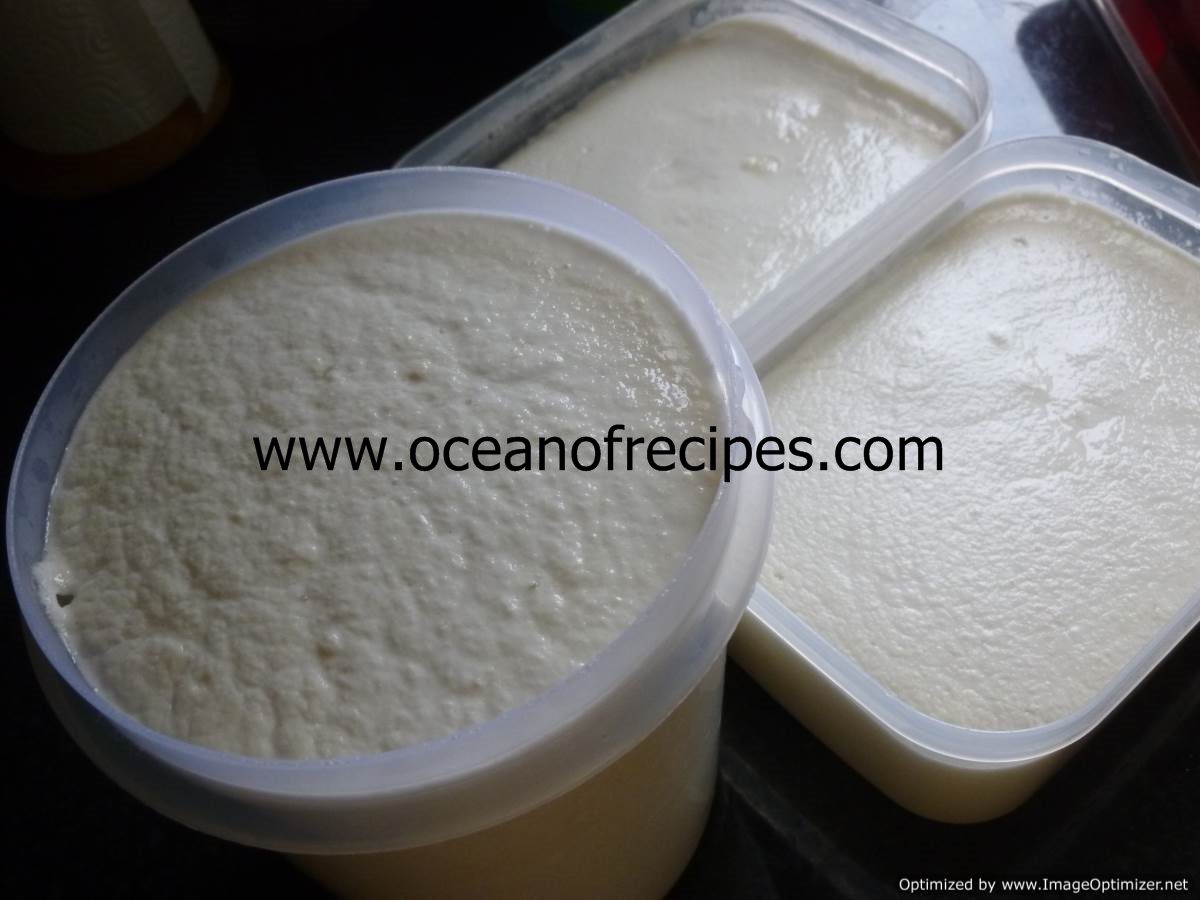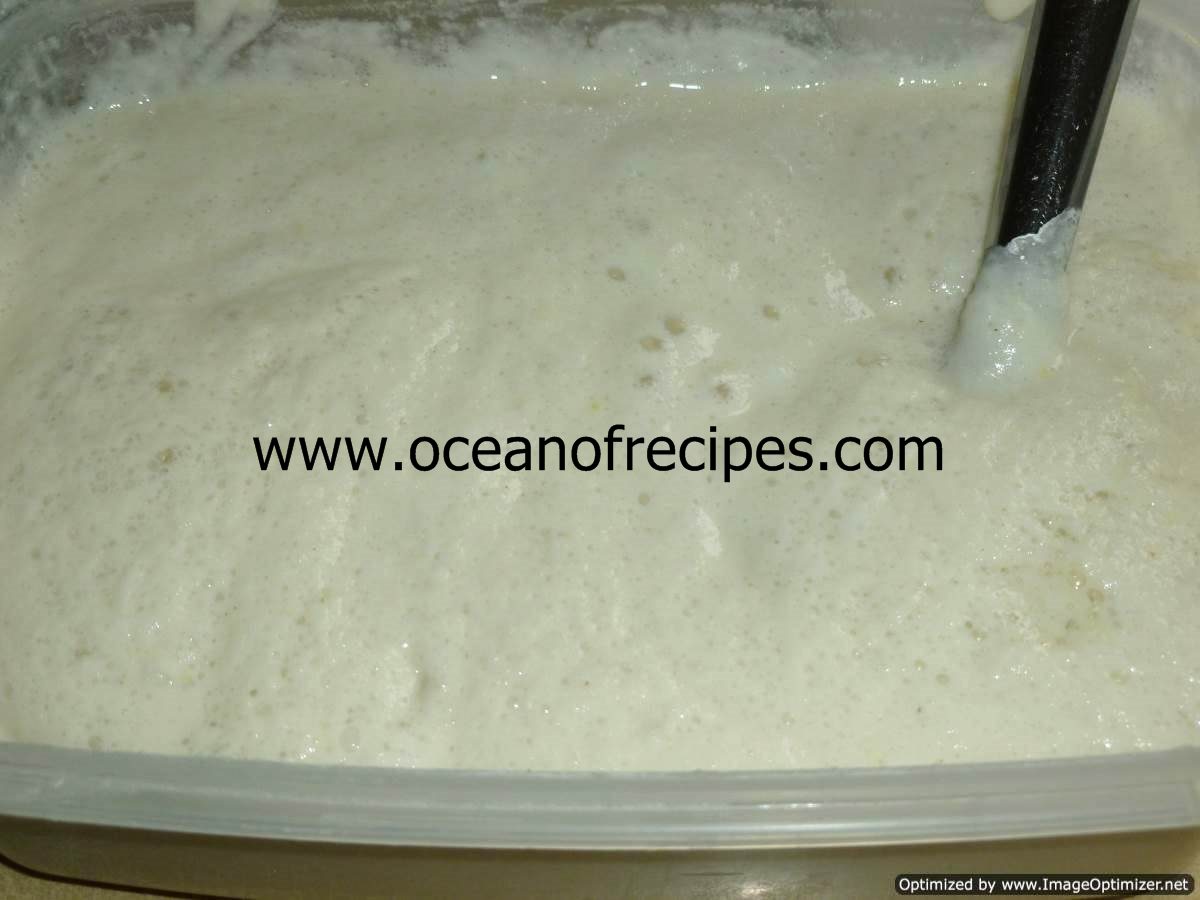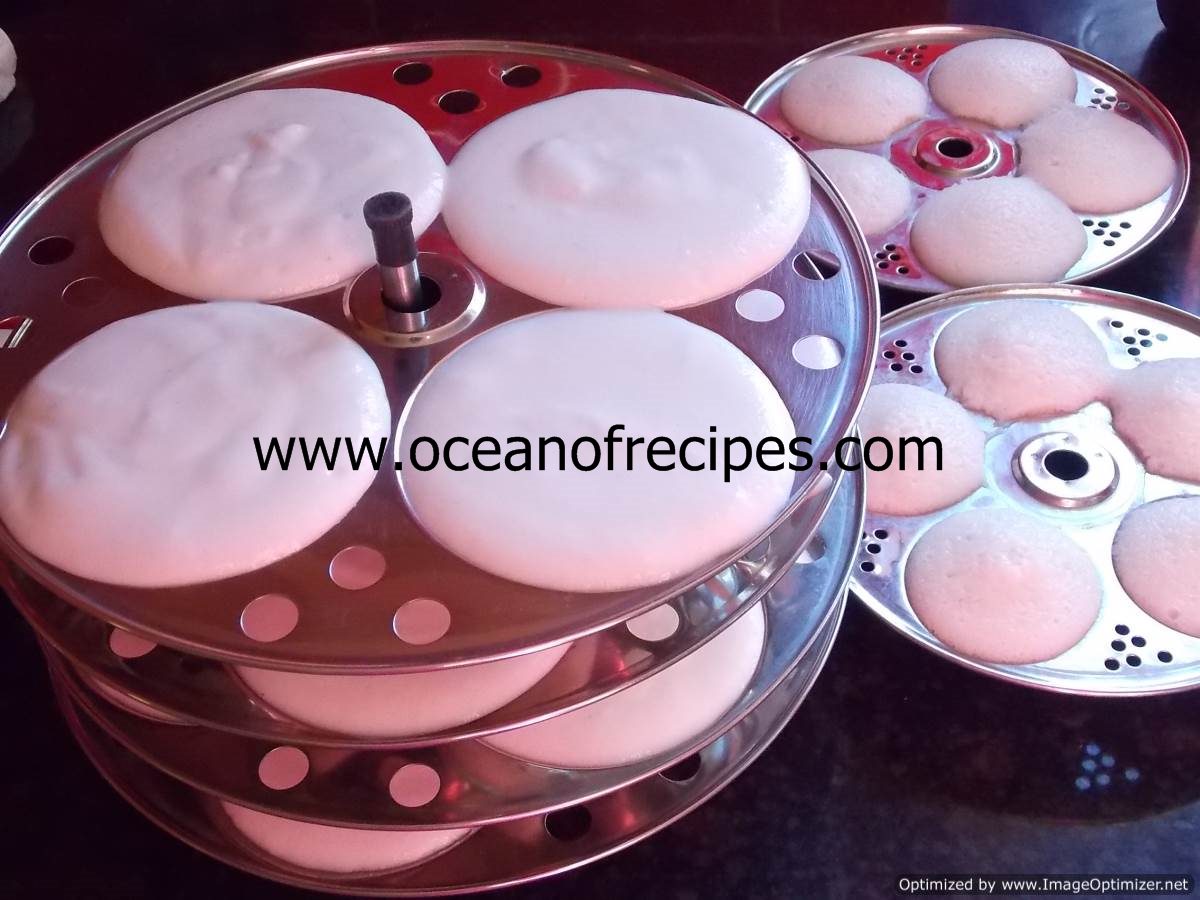![]()
Idli is the most popular south Indian breakfast. Khushboo idli is one more variety of idli and famous for its softness. It is spongy, fluffy and a little bigger than the usual idli. But for me the idli has to be soft and tasty for my breakfast. I tasted this in one of my friends place with coconut and tomato chutney. "Khushboo idli" seems to have named after the famous Tamil actress Khushboo, but I am not sure about this.
The main ingredient in Khushboo idli is sago (javvarisi in Tamil, sabudana in Hindi). In recipe 1, I have prepared with idli rice and raw rice (sona masoori) and khushboo idli came well. When I prepared with idli rice, idli was bigger than its usual size, softer and came well. Crispy dosa and set dosa can also be prepared with the same batter. In recipe 2, I prepared with raw rice (sona masoori) and with different proportions and the idli was lighter, softer. I added soda in this batter after fermentation. I am not trying to confuse on which rice to use, I was just trying out to see which one comes out better. In short, you can use any rice that is available to you.
Here in UK, because of the cold weather, there is always a problem for me to ferment the batter. Fermentation will not be a problem in hot places like Chennai. I am sharing 2 recipes in this as I have tried both and delicious idlis came out with both. Serve this delicious Khushboo idli with any chutney you like, sambar or any non-veg curry like chicken chettinadu or mutton chettinadu kuzhambu.
Preparation time: Soaking 6 hrs, grinding 45 mins, fermentation 10 hrs or more
Cooking time: 8 to 10 mins
Cuisine: South Indian, Tamil Nadu
Serves: 4 to 5 people
Spiciness: Not applicable
Ingredients
Recipe 1
- Idli rice – 3 cups
- Methi seeds – 1 tsp
- Sago (sabudana) – 1/2 cup
- Urad dal – 1 cup
- Water (use the soaked water of urad dal and rice) – 2 1/2 to 3 cups
- Salt - as required
Recipe 2
- Raw rice (sona masoori rice) – 3 cups
- Methi seeds (fenugreek seeds) – 1 tsp
- Sago (sabudana) – 3/4 cup
- Urad dal – 1 cup
- Soda – as required
- Water (use the soaked water of rice and urad dal) – 2 1/2 cups or as required
Method
Soaking rice, urad dal and sago (javarisi or sabudana)
- Soak idli rice, sago and methi seeds together for 4 to 6 hrs or overnight. I have soaked urad dal for 1 hour. Sometimes, I have also soaked it for 4 hours or overnight. Soak methi seeds in the rice or urad dal itself.
Grinding urad dal (refer idli recipe)
- First grind urad dal. Put the urad dal and little water first and grind it. While grinding, if the paste is getting dry and very thick, add water. I generally use about 1 1/2 cups of water to grind. Grind until you see a good amount of froth. The paste should be very smooth and fluffy like whipped cream or egg white. If you don't have a wet grinder then you can grind in a mixer until the mixie gets hot (add ice cold water for grinding if your mixie becomes hot). Grind until the urad dal paste is frothy and fluffy. Transfer to a container.
- Grinding urad dal takes about 25 to 30 mins.
Grinding rice and sago
- No need to wash the grinder after grinding the urad dal. Just directly add both rice and sago. While grinding rice, you first require about 3/4 cup of water. Add water slowly on the stones and sides where you can see that a thick paste is forming. Otherwise, the grinder will not move properly or rotate. With the help of spatula you can mix the mixture similar to how we stir curry in a vessel with a spoon.
- Water is added to grind the mixture smoothly. In the beginning add 3/4 cup of water for rice then 1/4 cup of water over time whenever you see a need. As soon as the batter gets thick, add a little water, so that the grinder runs smoothly.
- When the rice is ground into a smooth paste, the grinding process is completed.
- Grinding rice takes about 20 to 25 mins.
Mixing urad dal and rice batter
- Add urad dal batter in the rice batter and grind for a few minutes together, so that it is mixed well. About 5 minutes should be sufficient. Add salt during this time. Always add salt carefully. If it is less it can be adjusted later, but with more salt you get into trouble.
- The consistency of the batter should be too thick or too thin. Add water according to your rice and urad dal quality. The batter should be like custard consistency. I have shown you how to prepare idlis through the pictures, so that you can also prepare soft and delicious idlis at home for your family.
- For idlis, it should be thicker than that for dosa, as dosa requires a little bit thin batter to make dosas.
Storage and fermentation
- Transfer the batter into 2 or 3 boxes but only fill half of each box as after fermentation the quantity of batter increases a lot. In cold countries, you can ferment and then refrigerate, but in hot places like India, when the batter is ready, it is kept in fridge. When it is needed, the required quantity is taken and then fermented. For example, for next day's breakfast, the required amount of batter is taken and kept for fermentation the previous night. When the batter is fermented, salt is added and idlis or dosas are prepared for breakfast. In London, I grind it in the afternoon and keep it for fermentation until next day morning or afternoon and then only it ferments properly. For people who are lucky enough to ferment in lesser time, there is no need to keep it outside for long.
Steaming idlis
- When the batter is fermented, take the required amount of batter for your family and check if salt is sufficient. Add soda as required, which is optional. I have already added salt in my batter, so I pour the batter directly into the idli plates and steam it for 8 to 10 mins. When it is cooked, open the lid and let it rest for some time. Scoop out the idlis and the idlis will come out very easily. You can refrigerate the idlis and when needed, you can heat it in microwave and serve.
- If idli plates are not available, steam it like how dhokla is done. When it is cooked, cut into pieces and serve.
- Serve the Khushboo idlis with idli podi, chutney and sambar or any curry or korma.
Notes
- The batter should be not too thick or too thin. It should be like condensed milk or custard texture.
- In the recipe 2, when I added soda, the idlis were very soft.
- When it ferments well, it will be very light, fluffy and airy. If you mix too much, the airy bubbles will go off and you won’t get nice soft idlis. Do not stir the batter while making idlis.
- While grinding, use the soaked water. While grinding, make use of spatula to ensure there is no urad dal or cooked rice stuck on the sides of idli grinder.
- When cooked you can see that it won’t stick to your hands like raw batter.
- If you grease the idli plates with oil, just put a drop of oil and apply it with your fingers on the plate. Put batter and steam it. When it is cooked, it will come out easily.
- Sometimes I mix all together - rice and urad dal and grind. It ferments well as well and idlis are soft too. In that case, first add urad dal and grind it for 3 mins. Then add rice and sago mixture, grind together for 1/2 an hour to 40 mins or until you get the required consistency. But the method which I have explained to you is the best way, as idlies are very soft that way.
















